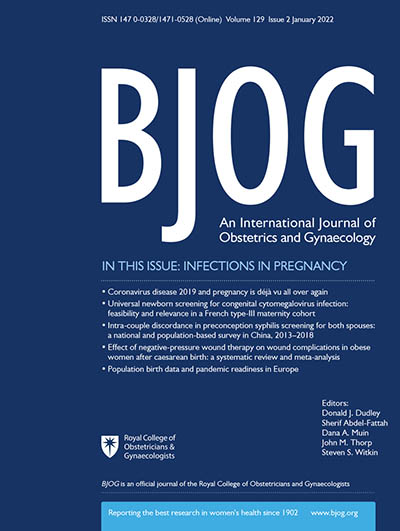Article, Refereed Journal
BJOG: An International Journal of Obstetrics & Gynaecology

Objective: To compare outcomes before and after implementation of medical abortion (termination of pregnancy) without ultrasound via telemedicine.
Design: Cohort analysis.
Setting: The three main abortion providers.
Population or sample: Medical abortions at home at ≤69 days' gestation in two cohorts: traditional model (in-person with ultrasound, n = 22 158) from January to March 2020 versus telemedicine-hybrid model (either in person or via telemedicine without ultrasound, n = 29 984, of whom 18 435 had no-test telemedicine) between April and June 2020. Sample (n = 52 142) comprises 85% of all medical abortions provided nationally.
Methods: Data from electronic records and incident databases were used to compare outcomes between cohorts, adjusted for baseline differences.
Main outcome measures: Treatment success, serious adverse events, waiting times, gestation at treatment, acceptability.
Results: Mean waiting time from referral to treatment was 4.2 days shorter in the telemedicine-hybrid model and more abortions were provided at ≤6 weeks' gestation (40% versus 25%, P < 0.001). Treatment success (98.8% versus 98.2%, P > 0.999), serious adverse events (0.02% versus 0.04%, P = 0.557) and incidence of ectopic pregnancy (0.2% versus 0.2%, P = 0.796) were not different between models. In the telemedicine-hybrid model, 0.04% were estimated to be over 10 weeks' gestation at the time of the abortion; all were completed safely at home. Within the telemedicine-hybrid model, effectiveness was higher with telemedicine than in-person care (99.2% versus 98.1%, P < 0.001). Acceptability of telemedicine was high (96% satisfied) and 80% reported a future preference for telemedicine.
Conclusions: A telemedicine-hybrid model for medical abortion that includes no-test telemedicine and treatment without an ultrasound is effective, safe, acceptable and improves access to care.
Tweetable abstract: Compelling evidence from 52 142 women shows no-test telemedicine abortion is safe, effective and improves care.
Research Topic
Reproductive Health

